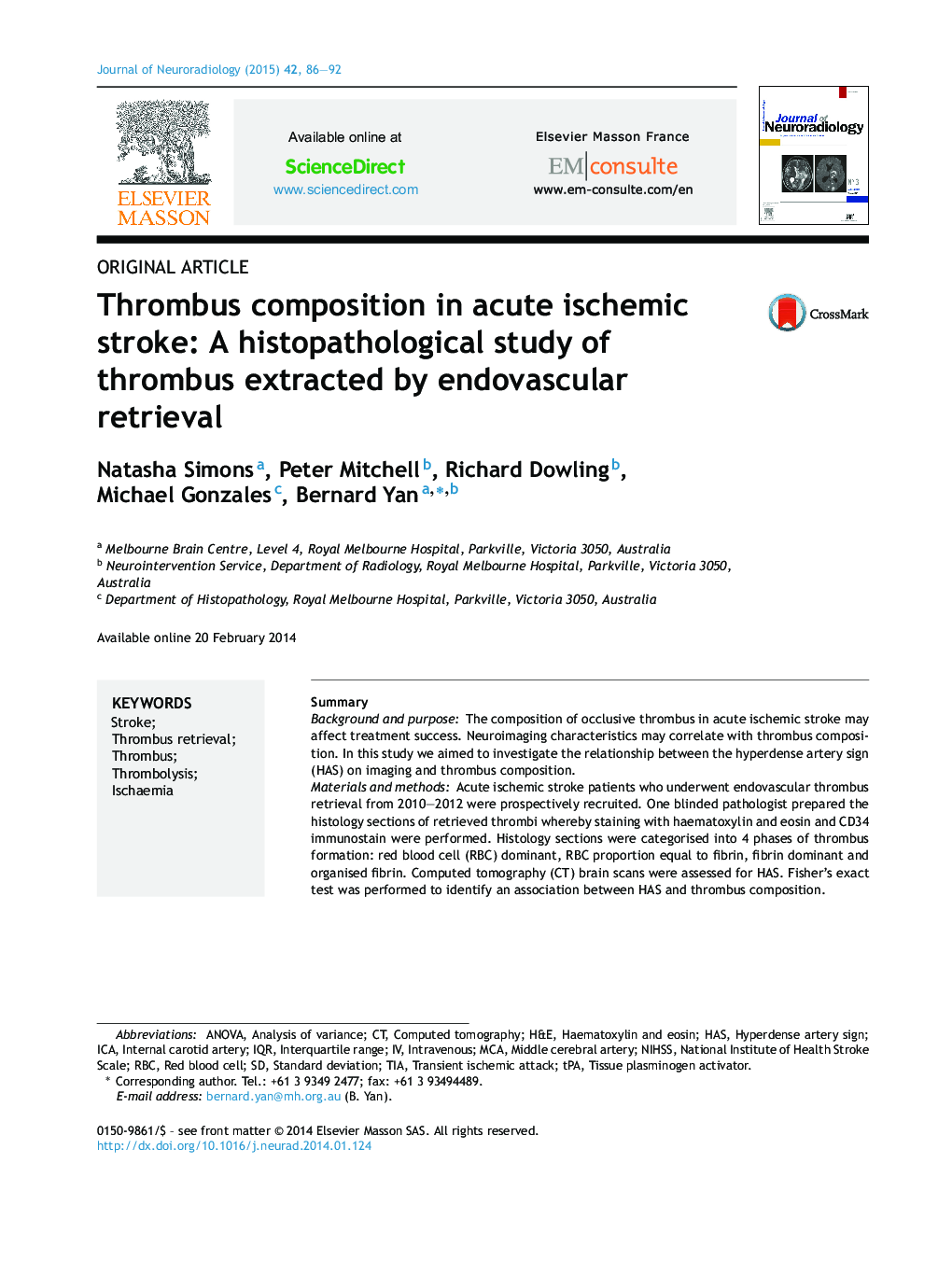| Article ID | Journal | Published Year | Pages | File Type |
|---|---|---|---|---|
| 4233476 | Journal of Neuroradiology | 2015 | 7 Pages |
SummaryBackground and purposeThe composition of occlusive thrombus in acute ischemic stroke may affect treatment success. Neuroimaging characteristics may correlate with thrombus composition. In this study we aimed to investigate the relationship between the hyperdense artery sign (HAS) on imaging and thrombus composition.Materials and methodsAcute ischemic stroke patients who underwent endovascular thrombus retrieval from 2010–2012 were prospectively recruited. One blinded pathologist prepared the histology sections of retrieved thrombi whereby staining with haematoxylin and eosin and CD34 immunostain were performed. Histology sections were categorised into 4 phases of thrombus formation: red blood cell (RBC) dominant, RBC proportion equal to fibrin, fibrin dominant and organised fibrin. Computed tomography (CT) brain scans were assessed for HAS. Fisher's exact test was performed to identify an association between HAS and thrombus composition.ResultsForty patients were included. The mean age was 65.6 ± 12.9 years and 67.5% were male. Atrial fibrillation was detected in 19 (47.5%) patients, diabetes mellitus in 6 (15.0%), hypercholesterolaemia in 11 (27.5%), hypertension in 20 (50.0%) and previous stroke or transient ischemic attack in 8 (20.0%) patients. Of the retrieved thrombi, 11 (27.5%) were RBC dominant, 11 (27.5%) RBC proportion was equal to fibrin, 7 (17.5%) fibrin dominant and 11 (27.5%) organised fibrin pathology. HAS was present in 29 (72.5%) patients and was significantly associated with thrombus early phase pathology (P < 0.05).ConclusionHAS was significantly associated with early phase thrombus composition. This may enable the prediction of thrombus composition and allow for targeted selection of therapeutic modality.
